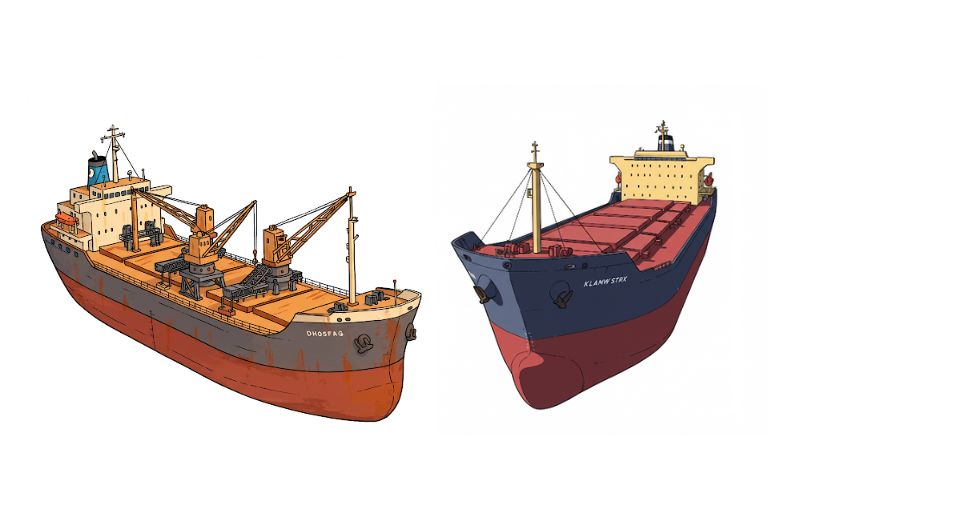
Apr 29, 2025

As per the sources of Metastat Insight, the Global Dry Bulk Shipping market has emerged as one of the most significant international trade constituents in moving both raw material and finished goods all over the world. This sector is essentially the backbone of such mass-consuming industries as coal, iron ore, grains, and many others. This market has really exhibited a remarkable degree of resilience against the backdrop of the most unpredictable economic and geopolitical terms despite the intricacies involved in dry bulk logistics. It is about trends, challenges, and opportunities in the sector that offers insights into the twists and turns that have purportedly shaped the sector's future.
Global Dry Bulk Shipping market is estimated to reach $125.3 million in 2025 with a CAGR of 2.8% from 2025 to 2032.
At the essence of the dry bulk shipping industry is reliable modes of transport systems that can be operated with the highest possible efficiencies. A major portion of the market consists of huge ships carrying thousands of tons of bulk materials. This hence forms an indispensable form of movement for industries such as mining, agriculture, as well as energy production. Growth in these sectors thus induces demand for dry bulk exports, which in turn translates into fleet expansion at a global level. These are ships which traditionally are designed to carry dry goods, such as coal, grains, and cement, which are unloaded into storage facilities at ports across the world.
It hasn't always been easy, though, as market challenges have come with it. By far, the worst concern mostly agitating dry bulk shipping companies is the always fluctuating fuel prices, through which operational costs are significantly affected. They follow the rising and falling trends of global oil prices and constantly make it impossible for companies to properly compute their expenses. Thus, as the emissions regulations grow stricter and environmental sustainability advances, the internationally imposed environmental provisions continue to tighten rules on the shipping industry, creating and imposing heavier burdens on shipping companies.
Another challenge left is the dynamism of global trade, which is very unfavorable in dry bulk shipping. Trade wars, sanctions, or even natural calamities could greatly interrupt the flow of goods and sudden shifts in demand for attainable cargo forms. For instance, developments in important shipping regions or tariffs can delay shipments, add transportation costs, and create uncertainty in the market. This kind of uncertainty may have a ripple effect throughout the supply chain, covering everything from production schedules to inventory management.
In spite of these difficulties, there are ample opportunities for growth in the Global Dry Bulk Shipping market. The demand for bulk materials such as coal, steel, and agriculture is projected to increase in line with the growth of developing economies. In particular, East Asian countries have emerged as the largest consumers of dry bulk cargo and have established a number of considerable trade routes with bulk carriers. Other trends that are commencing to support sustainability efforts in the sector are the technological advancement of shipping vessels, particularly in terms of the construction of eco-friendly and fuel-efficient ships. Such firms are most likely to emerge as market leaders, given their rapid adaptation to changing trends.
Likewise, technology has the power to change the face of dry bulk shipping. Digital platforms for shipment tracking and route optimization would go a long way toward improving the efficiency of dry bulk shipping, reducing delays, and creating an overall excellent experience for the customers. Also, another advancement that has continued on this path is automation, where more and more companies are now using automation systems to load and unload. The benefits include less human error, more safety, and a more streamlined operation, all in critical need to keep the industry competitive.
Concomitantly with technological advancements, the other reason behind the green movement cannot be overlooked. The international shipping community has decided to greatly cut carbon emissions, leading the way toward the use of cleaner fuels, efficient engine technologies, and alternative energy sources such as wind and solar power. Such initiatives harmonize with global attempts against climate change to find a more sustainable way for industries worldwide. Shipping companies that embrace such changes could do not only their share in the conservation of the environment, but also accrue goodwill for themselves among environmentally conscious consumers.
Another thing sustaining the optimistic outlook in dry bulk shipping is the constant further development of regional infrastructure. Ports are being modernized so that they can handle larger vessels and unload bulk cargo more efficiently. Logistical innovations such as better storage facilities and automated systems for loading and unloading cargo will also enhance operational optimization and turnaround times. Infrastructure development will certainly keep up the growing demand of global trade for the dry bulk shipping market; thereby certainly adding to greater margins and sustainability of the industry.
According to Metastat Insight, the Global Dry Bulk Shipping market thus reveals an industry caught in a web of both enormous challenges and transforming opportunities. Fuel prices, governmental regulatory frameworks, and geopolitical strife give sufficient reasons why the business at times becomes confronted; nevertheless, other factors-gravity, policy progress, opportunity-seem to brighten up consort with the emergence of dry bulk carriers.
Drop us an email at:
Call us on:
+1 214 613 5758
+91 73850 57479